Why Liter of Light’s Guinness World Record for Largest Display of Solar-Powered Lamps Is More Than Just a Visual Feast
ADVERTISEMENT

Welcome, Kapamilya! We use cookies to improve your browsing experience. Continuing to use this site means you agree to our use of cookies. Tell me more!
Why Liter of Light’s Guinness World Record for Largest Display of Solar-Powered Lamps Is More Than Just a Visual Feast
Grace Diez
Published Jul 20, 2025 04:30 PM PHT
|
Updated Jul 20, 2025 04:32 PM PHT
 Photo by Derrick Lim Studio
Photo by Derrick Lim Studio
 Photo by Derrick Lim Studio
Photo by Derrick Lim StudioIt was a proud Filipino moment as Liter of Light recently scored a Guinness World Record for the largest display of solar-powered lamps at the Liwasang Rizal in Manila. Liter of Light is an organization that teaches green skills and creates green jobs for communities; it is also best known for utilizing recycled materials to create solar lights.
It was a proud Filipino moment as Liter of Light recently scored a Guinness World Record for the largest display of solar-powered lamps at the Liwasang Rizal in Manila. Liter of Light is an organization that teaches green skills and creates green jobs for communities; it is also best known for utilizing recycled materials to create solar lights.
The public art installation called Circle of Light is made up of 3,500 solar lamps built using traditional ceramics handcrafted by members of women's cooperatives. The initiative was an effort spearheaded by Sun Life in partnership with Liter of Light, the National Museum of the Philippines, and Odangputik Art Space.
The public art installation called Circle of Light is made up of 3,500 solar lamps built using traditional ceramics handcrafted by members of women's cooperatives. The initiative was an effort spearheaded by Sun Life in partnership with Liter of Light, the National Museum of the Philippines, and Odangputik Art Space.
Illac Diaz, Liter of Light founder and executive director, shared his thoughts about the recent milestone.
Illac Diaz, Liter of Light founder and executive director, shared his thoughts about the recent milestone.
“I was very proud because in the narratives of climate change, unfortunately, the Philippines is always portrayed as the victim, as a kind of a ‘wait and see’ or with some kind of hopelessness. And I would say ‘no,’ because we never get the chance to tell our stories. I really believe that the voices of the Pacific are seldom heard. We have stories of resilience. We have stories, not of depression and hopelessness, but of strength,” Diaz began.
“I was very proud because in the narratives of climate change, unfortunately, the Philippines is always portrayed as the victim, as a kind of a ‘wait and see’ or with some kind of hopelessness. And I would say ‘no,’ because we never get the chance to tell our stories. I really believe that the voices of the Pacific are seldom heard. We have stories of resilience. We have stories, not of depression and hopelessness, but of strength,” Diaz began.
ADVERTISEMENT
“And so I needed to show it in a very visual way because, you know, people don't just want words. The visual art—especially climate art—is a very powerful medium. The way that I believe the story should be is that we should allow people, instead of top-down, big people solving big problems. It's people coming together, each contributing a little bit— very Bayanihan spirit. Coming together can be as powerful as waiting for Superman to come in and, you know, make a huge donation or a government. I wanted to show this in a visual art. So that's what happened. We asked many people, so this is very different,” he continued, emphasizing that the impressive display wasn’t just a spectacle, it’s a statement.
“And so I needed to show it in a very visual way because, you know, people don't just want words. The visual art—especially climate art—is a very powerful medium. The way that I believe the story should be is that we should allow people, instead of top-down, big people solving big problems. It's people coming together, each contributing a little bit— very Bayanihan spirit. Coming together can be as powerful as waiting for Superman to come in and, you know, make a huge donation or a government. I wanted to show this in a visual art. So that's what happened. We asked many people, so this is very different,” he continued, emphasizing that the impressive display wasn’t just a spectacle, it’s a statement.
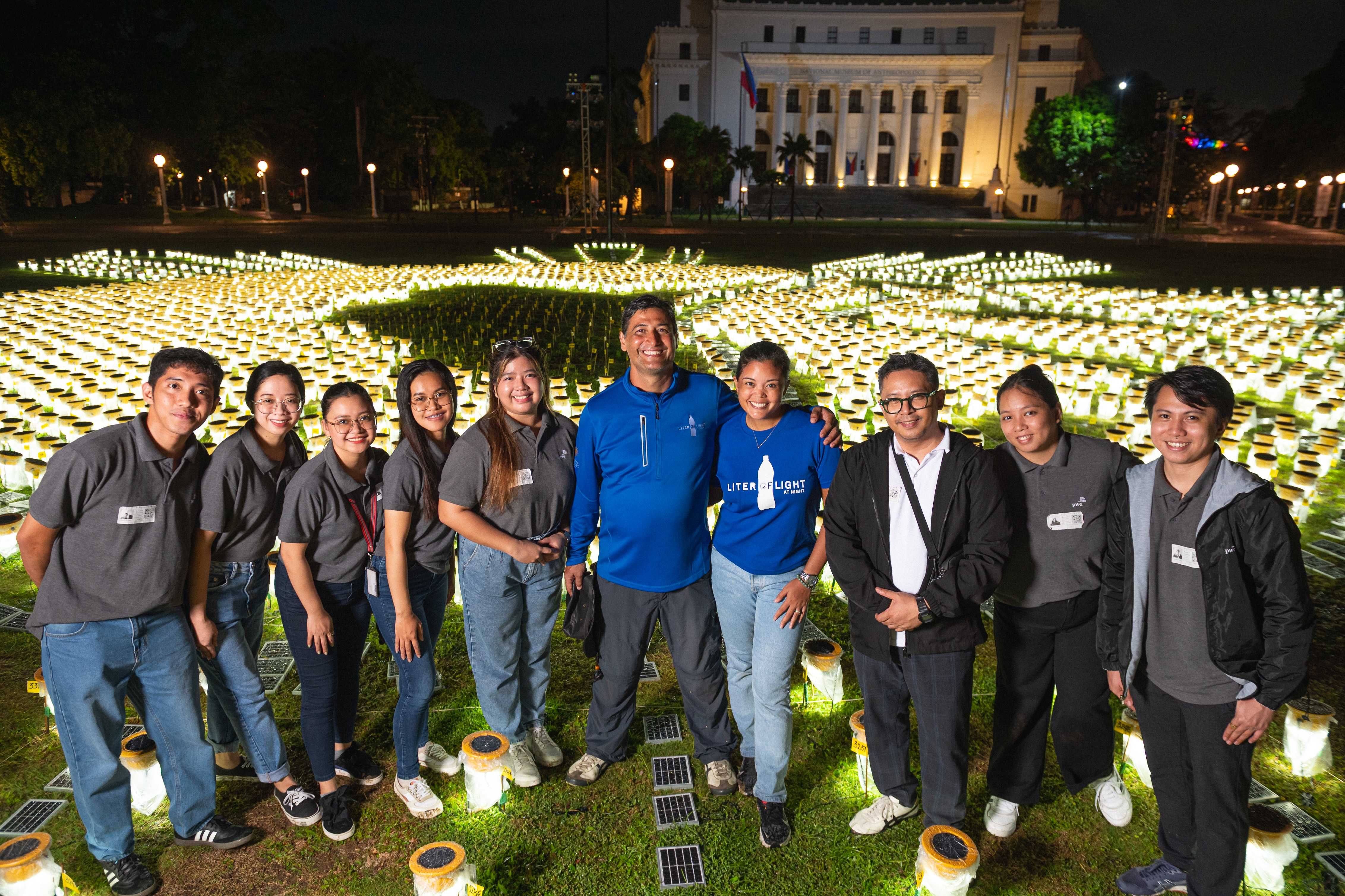 Photo by Derrick Lim Studio
Photo by Derrick Lim Studio
 Photo by Derrick Lim Studio
Photo by Derrick Lim Studio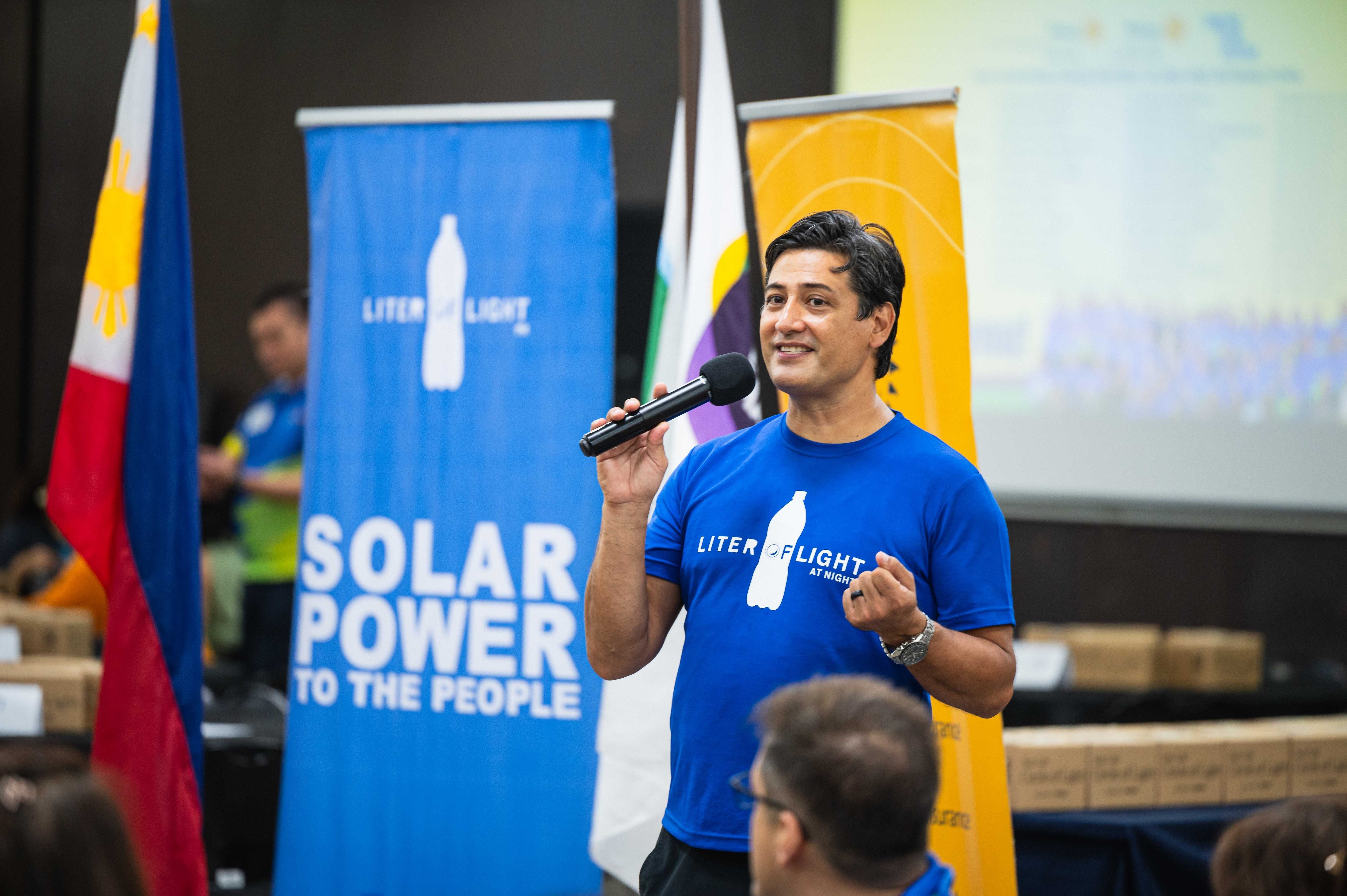 Photo by Derrick Lim Studio
Photo by Derrick Lim Studio
 Photo by Derrick Lim Studio
Photo by Derrick Lim StudioAwareness + action
To Diaz, advocacy and sustainability efforts shouldn’t just stop at awareness. To him, the sincerity is in the tangible change that happens after creating awareness. After the Circle of Light exhibition, the solar lamps will be relocated to Region 4A, with the help of the Department of Education (DepED), to bring clean, renewable light to students and families in need.
To Diaz, advocacy and sustainability efforts shouldn’t just stop at awareness. To him, the sincerity is in the tangible change that happens after creating awareness. After the Circle of Light exhibition, the solar lamps will be relocated to Region 4A, with the help of the Department of Education (DepED), to bring clean, renewable light to students and families in need.
“We wanted an event that actually has a conversion rate and impacts communities—parang results that [people] can feel,” Diaz noted. He observed that people who volunteer to help start off really passionately and sadly, lose their heart when they see no change, even when they pour in so much effort and time into an advocacy.
“We wanted an event that actually has a conversion rate and impacts communities—parang results that [people] can feel,” Diaz noted. He observed that people who volunteer to help start off really passionately and sadly, lose their heart when they see no change, even when they pour in so much effort and time into an advocacy.
“We have a lot of young people frustrated and jaded because they're always asking, 'Where does my energy go? Where does my time go?' They're very transparent nowadays,” he observed.
“We have a lot of young people frustrated and jaded because they're always asking, 'Where does my energy go? Where does my time go?' They're very transparent nowadays,” he observed.
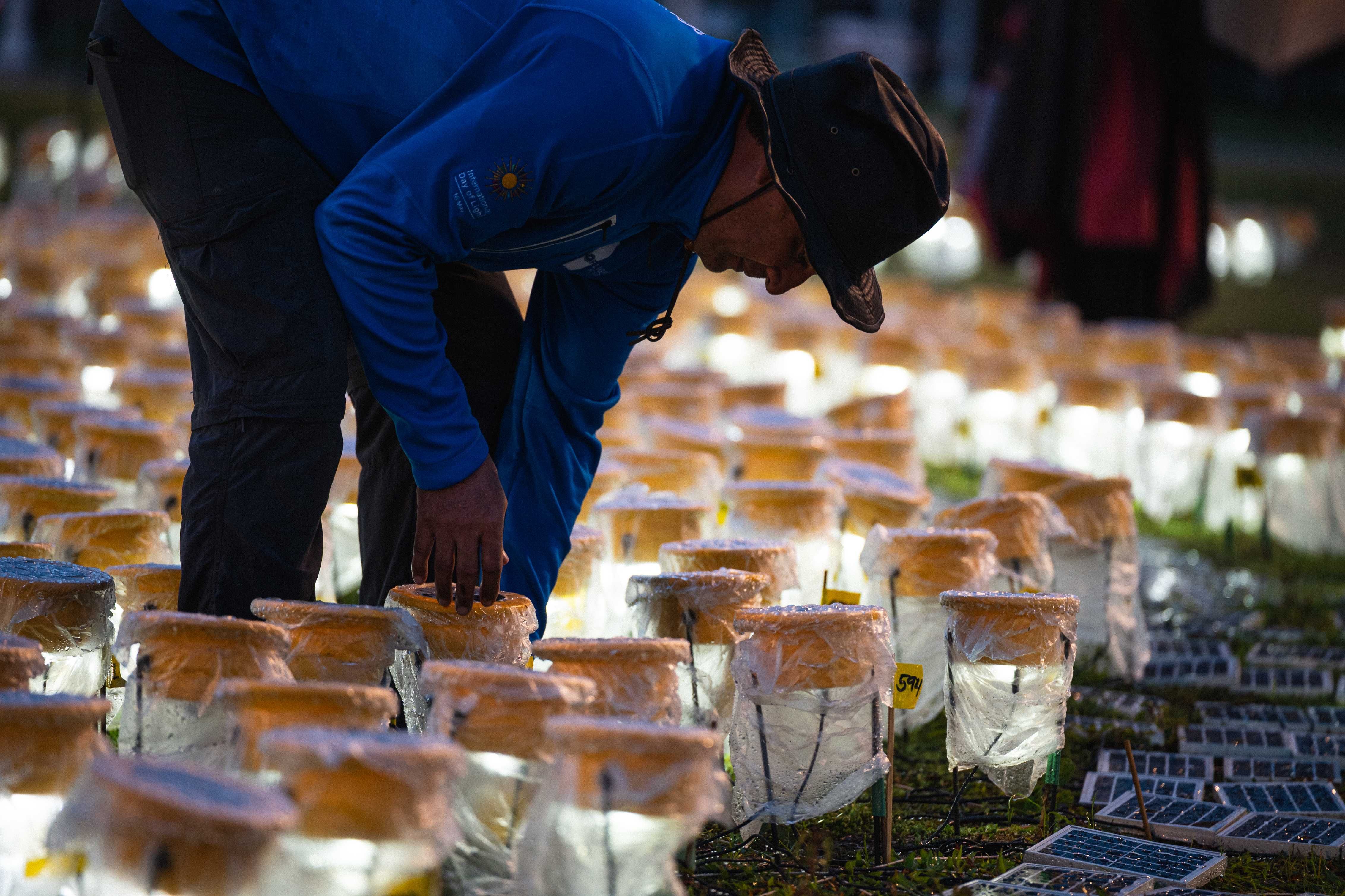 Photo by Derrick Lim Studio
Photo by Derrick Lim Studio
 Photo by Derrick Lim Studio
Photo by Derrick Lim Studio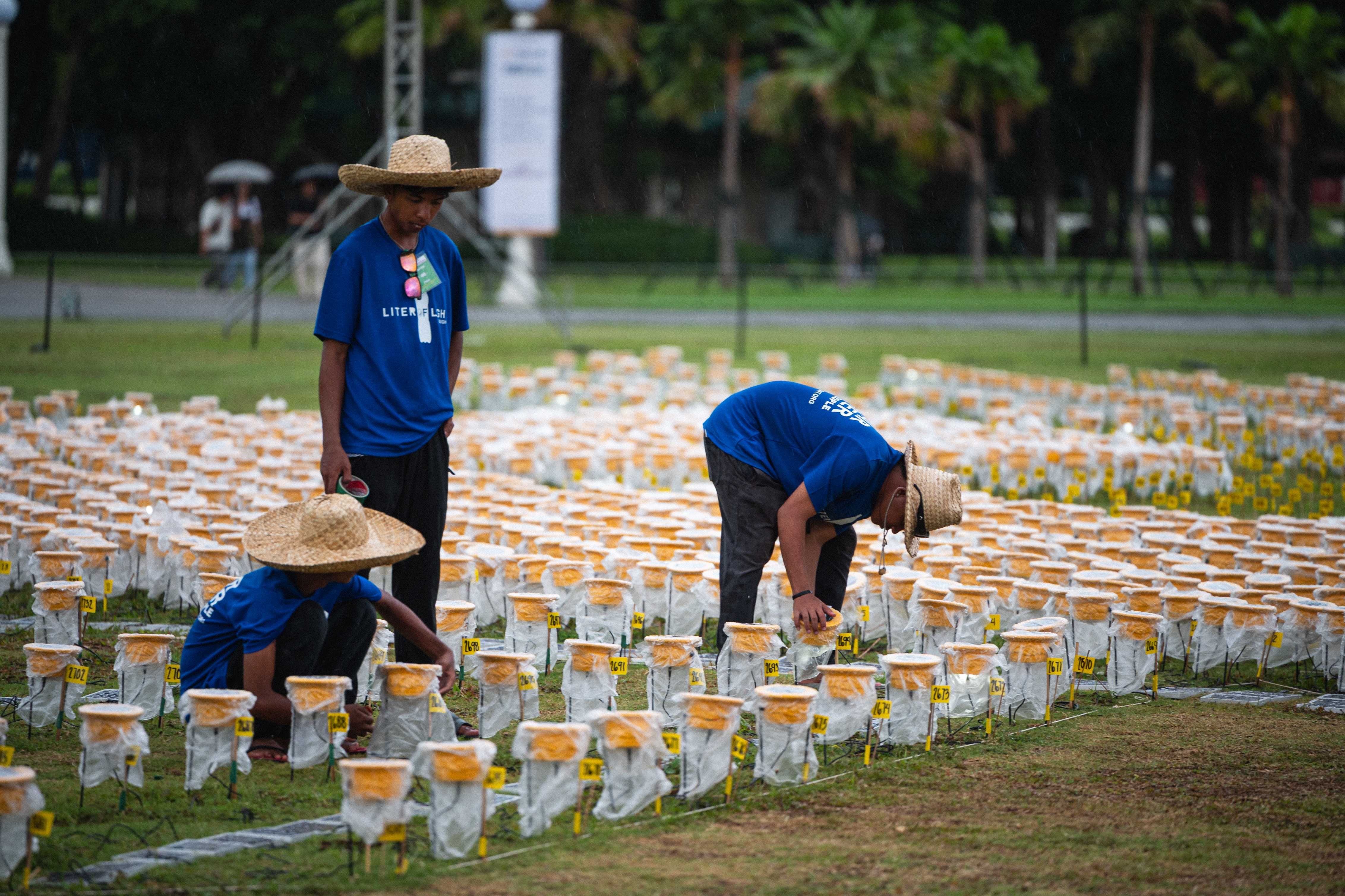 Photo by Derrick Lim Studio
Photo by Derrick Lim Studio
 Photo by Derrick Lim Studio
Photo by Derrick Lim StudioWith the Circle of Light, Diaz’s vision was clear—to make this a bayanihan and community-centric project. He thinks of it as a whole-of-society approach to solving energy poverty.
With the Circle of Light, Diaz’s vision was clear—to make this a bayanihan and community-centric project. He thinks of it as a whole-of-society approach to solving energy poverty.
ADVERTISEMENT
“We wanted an end-to-end cooperation to help us bring the lights,” he said, naming the different community-based groups that worked together and created solar-powered lamps to make the project possible. It entailed volunteers from the Rotary International, the Firefly Brigade, the Department of Science and Technology, the Asian Institute of Management (AIM), the Youth for Dagat, the Philippine Coast Guard Training and Doctrine Command, and students.
“We wanted an end-to-end cooperation to help us bring the lights,” he said, naming the different community-based groups that worked together and created solar-powered lamps to make the project possible. It entailed volunteers from the Rotary International, the Firefly Brigade, the Department of Science and Technology, the Asian Institute of Management (AIM), the Youth for Dagat, the Philippine Coast Guard Training and Doctrine Command, and students.
“You know, people can come together and do a large-scale climate action, not just a climate protest. We do great climate protests, but it's better to show a solution with all that energy rather than wait for policy to change, right?” Diaz pensively stated.
“You know, people can come together and do a large-scale climate action, not just a climate protest. We do great climate protests, but it's better to show a solution with all that energy rather than wait for policy to change, right?” Diaz pensively stated.
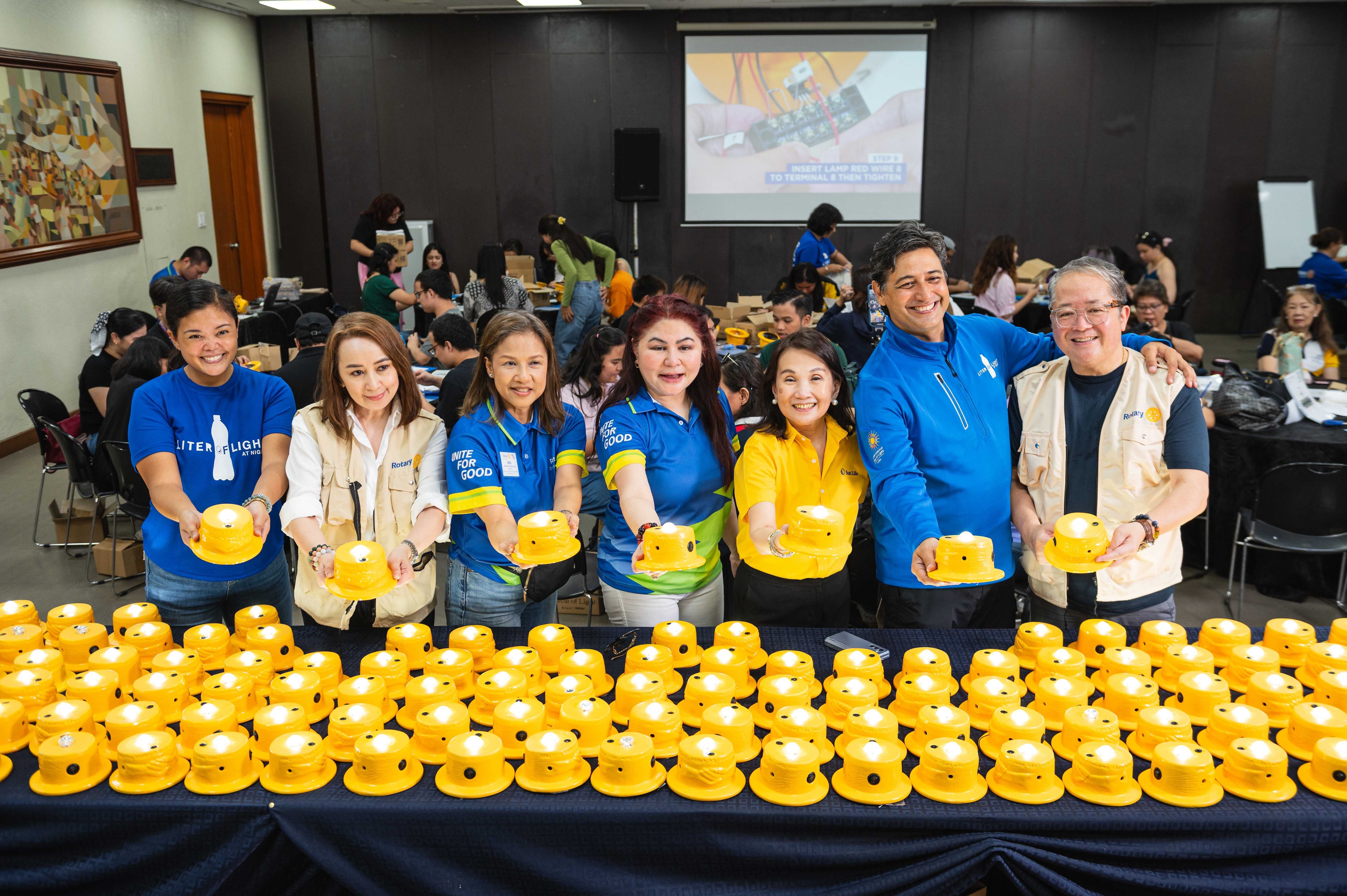 Photo by Derrick Lim Studio
Photo by Derrick Lim Studio
 Photo by Derrick Lim Studio
Photo by Derrick Lim Studio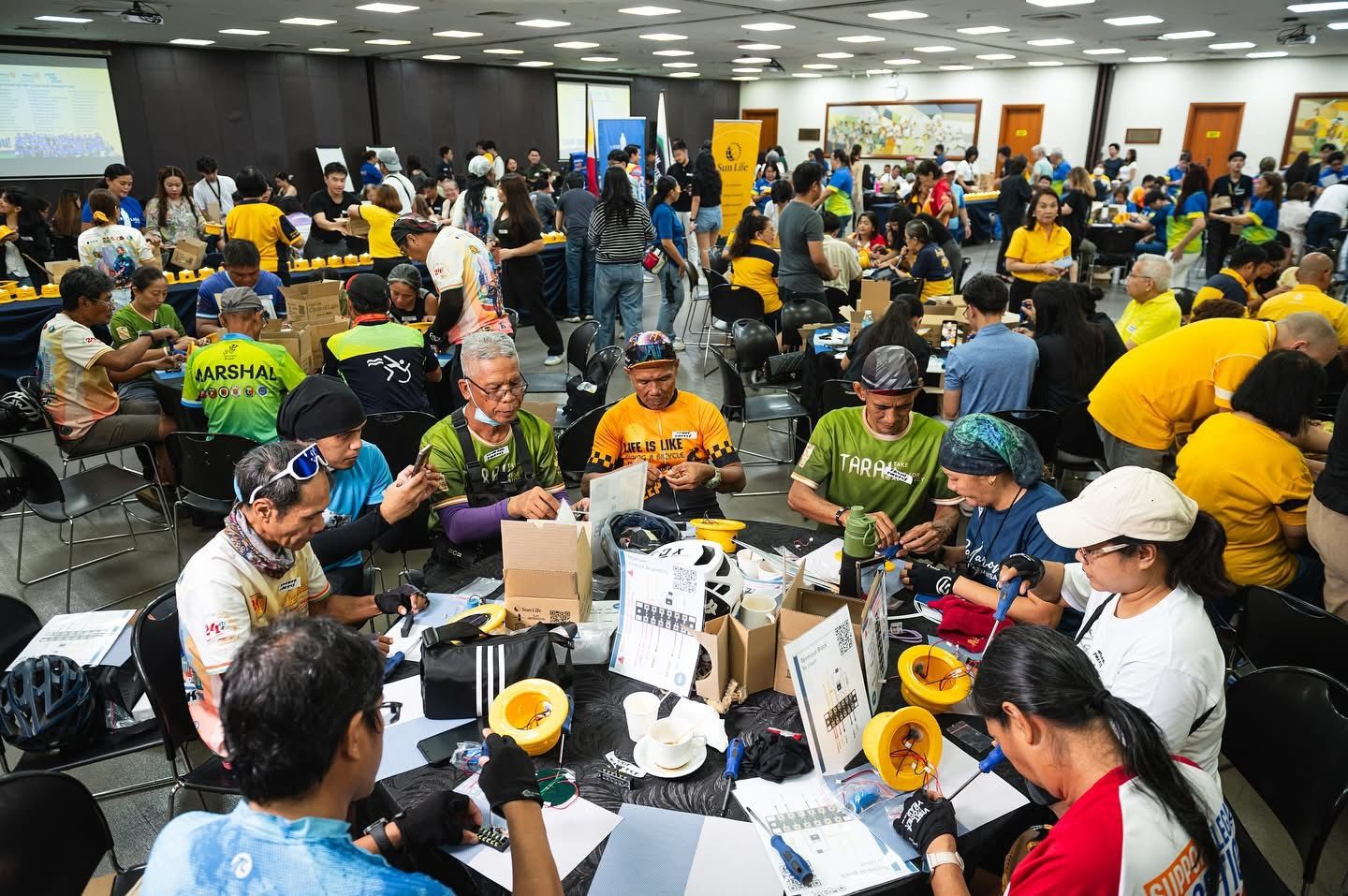 Photo by Derrick Lim Studio
Photo by Derrick Lim Studio
 Photo by Derrick Lim Studio
Photo by Derrick Lim StudioReclaiming the Filipino narrative
On a related note, the Liter of Light founder strongly believes that Filipinos should be seen as their own heroes, and not as victims, in the climate and sustainability conversation.
On a related note, the Liter of Light founder strongly believes that Filipinos should be seen as their own heroes, and not as victims, in the climate and sustainability conversation.
“It's never been Filipinos as victims. Actually, if you look at the whole picture, Filipinos are the heroes of climate change. We’re not just waiting for storms to hit us at that point. We’re not just beneficiaries—we’re also taking action,” he said.
“It's never been Filipinos as victims. Actually, if you look at the whole picture, Filipinos are the heroes of climate change. We’re not just waiting for storms to hit us at that point. We’re not just beneficiaries—we’re also taking action,” he said.
“What do we do when there are these kinds of super storms? We can't just make food, and we can't just deliver old clothes every single time. People need light. And so, how do we build light in the fastest way possible? We can build solar lights in 30 minutes, with thousands of us. We can build it and give it,” Diaz explained, adding that this is why their group organizes massive campaigns during the months before the typhoon season hits.
“What do we do when there are these kinds of super storms? We can't just make food, and we can't just deliver old clothes every single time. People need light. And so, how do we build light in the fastest way possible? We can build solar lights in 30 minutes, with thousands of us. We can build it and give it,” Diaz explained, adding that this is why their group organizes massive campaigns during the months before the typhoon season hits.
ADVERTISEMENT
“It would be nice that [evacuees and typhoon victims] have light because you could have food and you could have clothes, but if you don't have light, it's really miserable. We also build mobile chargers and solar streetlights. So there’s a 75% reduction in the crime rate during disasters because you have an avenue where people walk. So yes, we talk about energy poverty, but our strength really is we rebuild,” the philanthropist passionately clarified.
“It would be nice that [evacuees and typhoon victims] have light because you could have food and you could have clothes, but if you don't have light, it's really miserable. We also build mobile chargers and solar streetlights. So there’s a 75% reduction in the crime rate during disasters because you have an avenue where people walk. So yes, we talk about energy poverty, but our strength really is we rebuild,” the philanthropist passionately clarified.
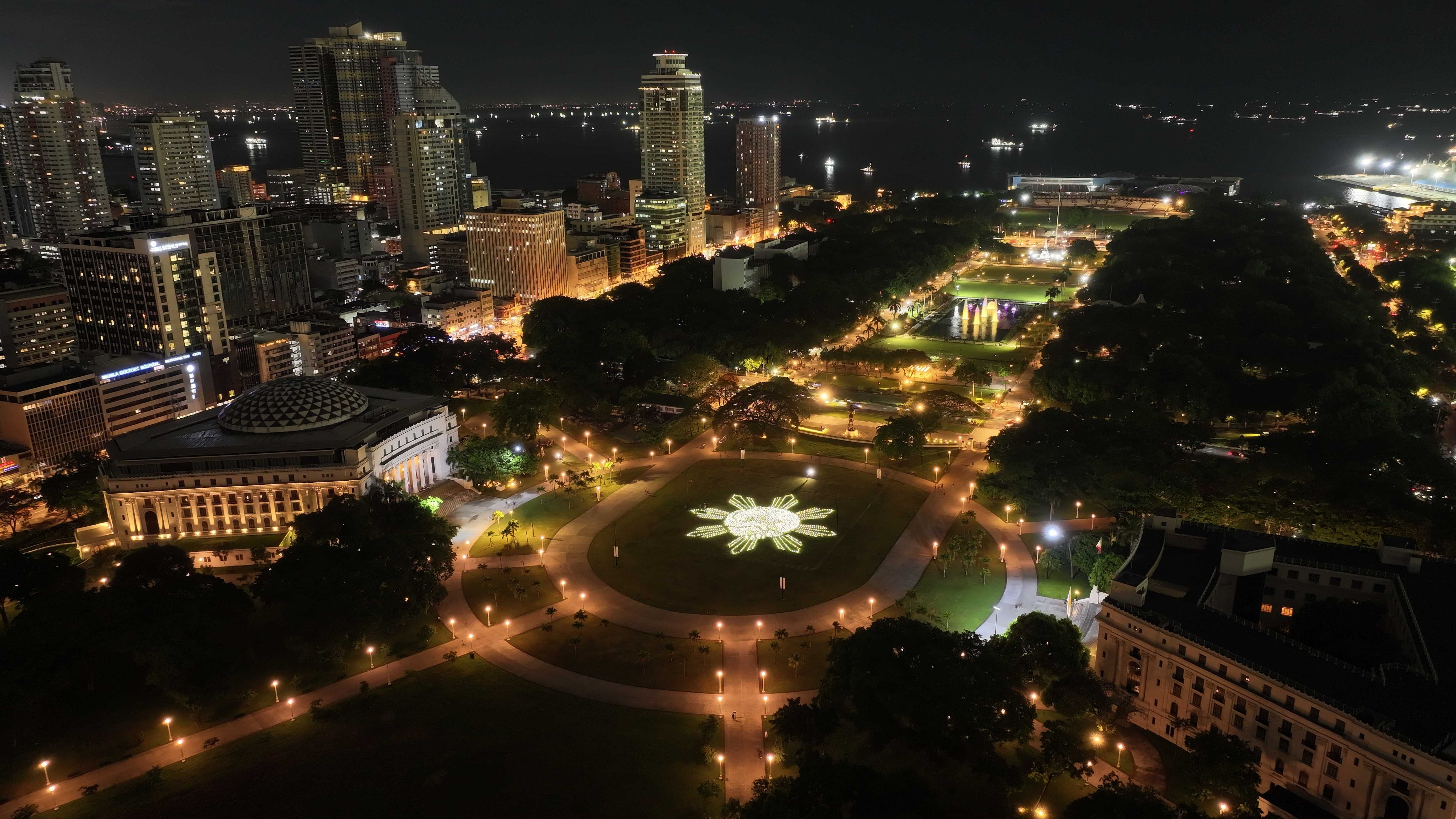 Photo by Mic Jacinto
Photo by Mic Jacinto
 Photo by Mic Jacinto
Photo by Mic Jacinto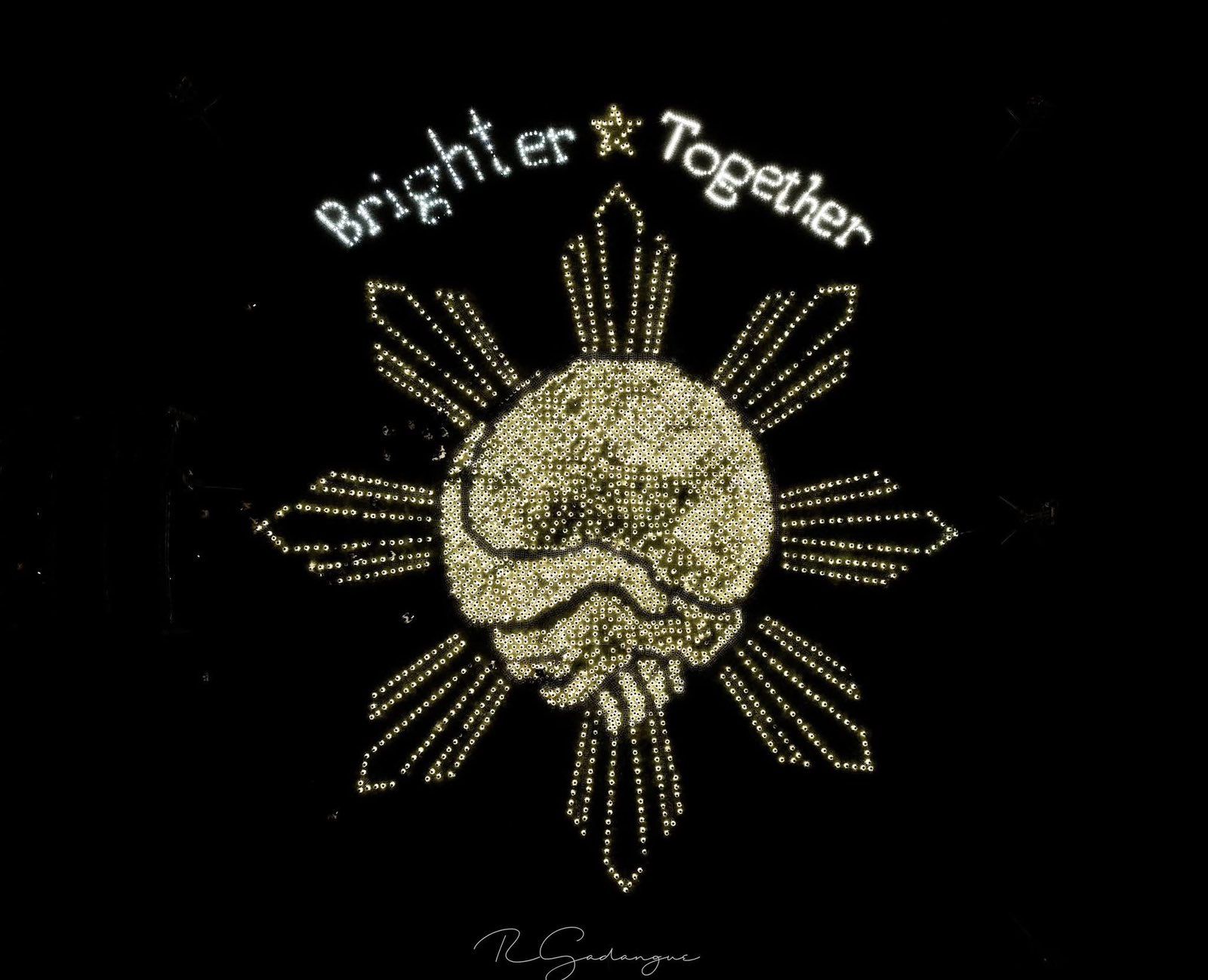 Artwork by Ramil Gasangue
Artwork by Ramil Gasangue
Diaz points to the role of OFWs in rebuilding after disasters, especially during typhoon season, as evidence of Filipino resilience and bayanihan.
Diaz points to the role of OFWs in rebuilding after disasters, especially during typhoon season, as evidence of Filipino resilience and bayanihan.
“Every year around July or August, OFWs send more money back home—not because they’re earning more, but because they have to rebuild. So don’t look down on us. We’re funding our own reconstruction,” he observed.
“Every year around July or August, OFWs send more money back home—not because they’re earning more, but because they have to rebuild. So don’t look down on us. We’re funding our own reconstruction,” he observed.
This self-reliance is something that Diaz thinks should be at the forefront of conversations, not just for Liter of Light but for each time Filipinos’ resilience is tested.
This self-reliance is something that Diaz thinks should be at the forefront of conversations, not just for Liter of Light but for each time Filipinos’ resilience is tested.
“We teach thousands of people to build solar lights. I call them solar volunteers. One day, if I need, I could build solar lights in an army,” he declared.
“We teach thousands of people to build solar lights. I call them solar volunteers. One day, if I need, I could build solar lights in an army,” he declared.
ADVERTISEMENT
To him, this grassroots approach is not just practical—it’s transformative.
To him, this grassroots approach is not just practical—it’s transformative.
“We are teaching so many people how to do it. We want to empower people to be exactly like us, capable like us, and not depend on us. That’s the magic—we’re an organization that wants to make ourselves obsolete,” Diaz thoughtfully stated.
“We are teaching so many people how to do it. We want to empower people to be exactly like us, capable like us, and not depend on us. That’s the magic—we’re an organization that wants to make ourselves obsolete,” Diaz thoughtfully stated.
He cited an example where 35% of the village's consumption of income is allocated for energy.
He cited an example where 35% of the village's consumption of income is allocated for energy.
“Wouldn’t it be easier if we taught them how to build solar lights, keeping that 35% [of income spent on energy] for medicines, education, better books?” he ruminated.
“Wouldn’t it be easier if we taught them how to build solar lights, keeping that 35% [of income spent on energy] for medicines, education, better books?” he ruminated.
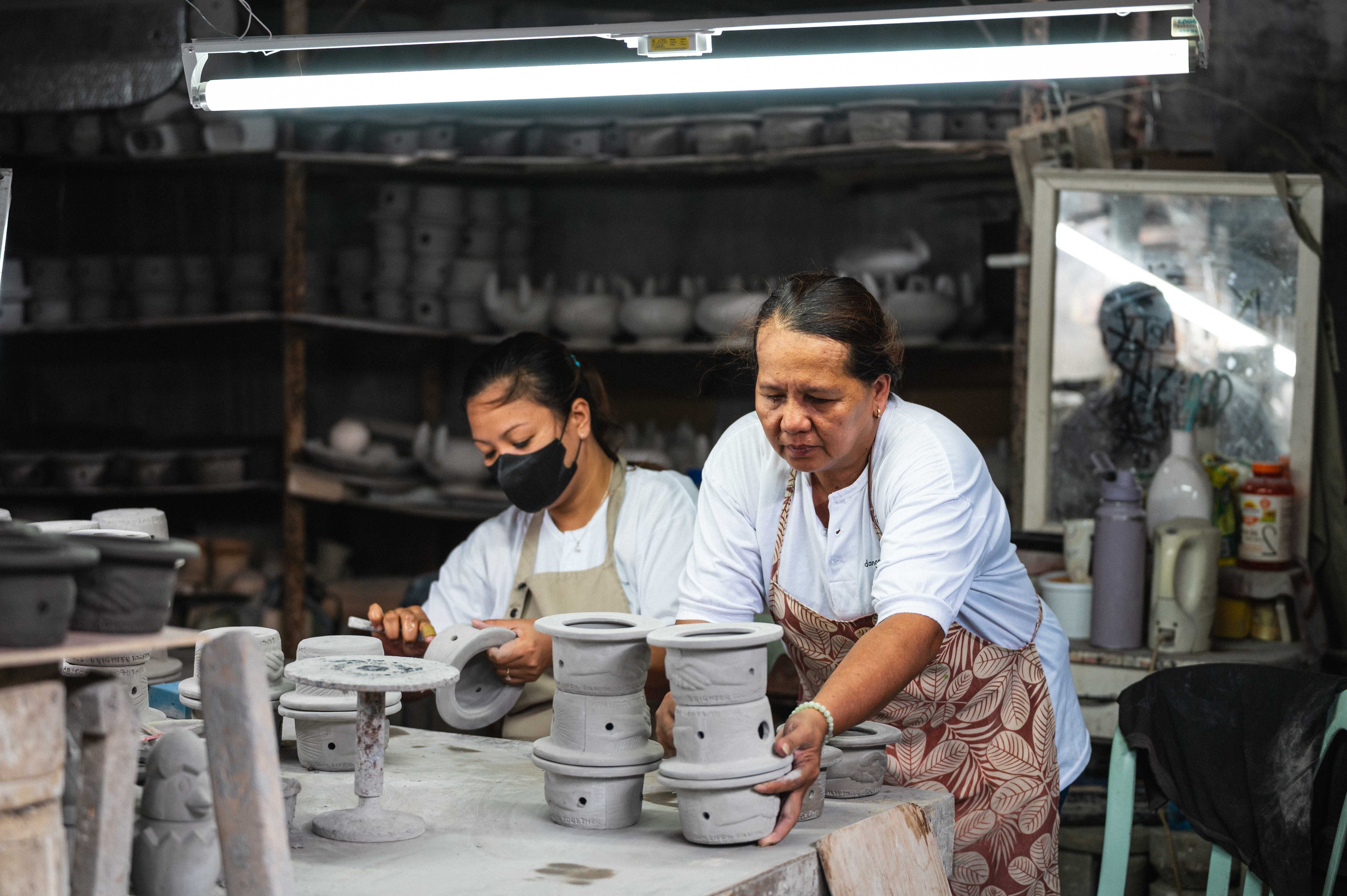 Photo by Derrick Lim Studio
Photo by Derrick Lim Studio
 Photo by Derrick Lim Studio
Photo by Derrick Lim Studio Photo by Derrick Lim Studio
Photo by Derrick Lim Studio
 Photo by Derrick Lim Studio
Photo by Derrick Lim StudioSustainability saves culture
Liter of Light’s partnership with Odangputik in the Circle of Light project is also an example of how Diaz would like to integrate sustainability efforts with arts and culture. The lamps used in the record-making light display weren’t just used to light up the dark—the materials used for the display were beautifully handcrafted lamps by the women’s cooperative specializing in pottery.
Liter of Light’s partnership with Odangputik in the Circle of Light project is also an example of how Diaz would like to integrate sustainability efforts with arts and culture. The lamps used in the record-making light display weren’t just used to light up the dark—the materials used for the display were beautifully handcrafted lamps by the women’s cooperative specializing in pottery.
ADVERTISEMENT
“We worked with them so that, through Philippine hands, we can make something from mud into something beautiful. I’m always looking at how artisans can benefit from the revolution in green technologies,” Diaz explained.
“We worked with them so that, through Philippine hands, we can make something from mud into something beautiful. I’m always looking at how artisans can benefit from the revolution in green technologies,” Diaz explained.
He sees this intersection of sustainability and social enterprise as a model for inclusive development.
He sees this intersection of sustainability and social enterprise as a model for inclusive development.
“If we can create a product that is combined with green technologies, we can make this around the Philippines, and it could be a viable product, right? I'm always looking at how the artisans can benefit from the revolution and investments in green technologies. [Through the Guinness World Records,] [this is] to showcase to the world that investment should be done [here],” the visionary founder offered.
“If we can create a product that is combined with green technologies, we can make this around the Philippines, and it could be a viable product, right? I'm always looking at how the artisans can benefit from the revolution and investments in green technologies. [Through the Guinness World Records,] [this is] to showcase to the world that investment should be done [here],” the visionary founder offered.
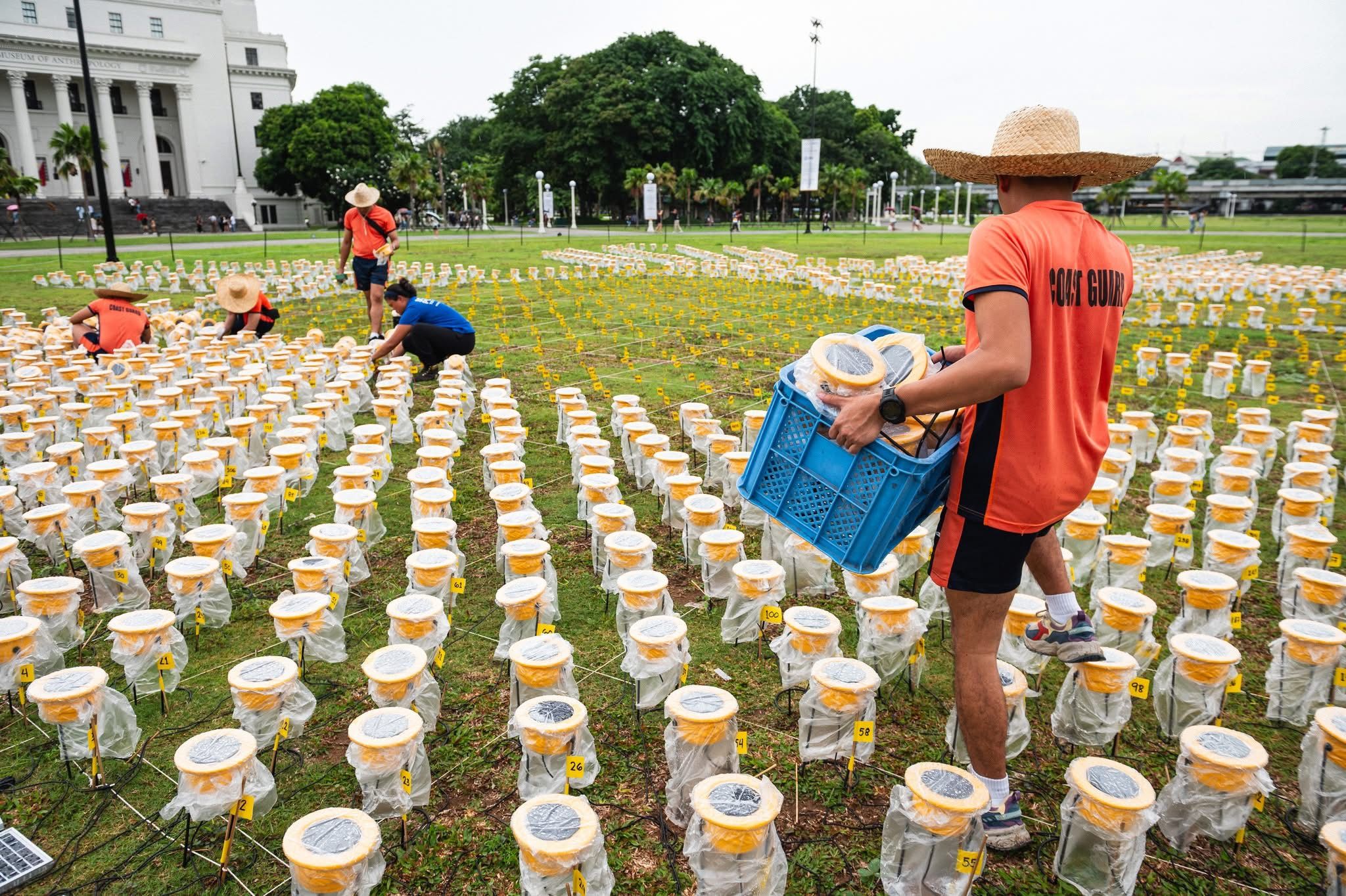 Photo by Derrick Lim Studio
Photo by Derrick Lim Studio
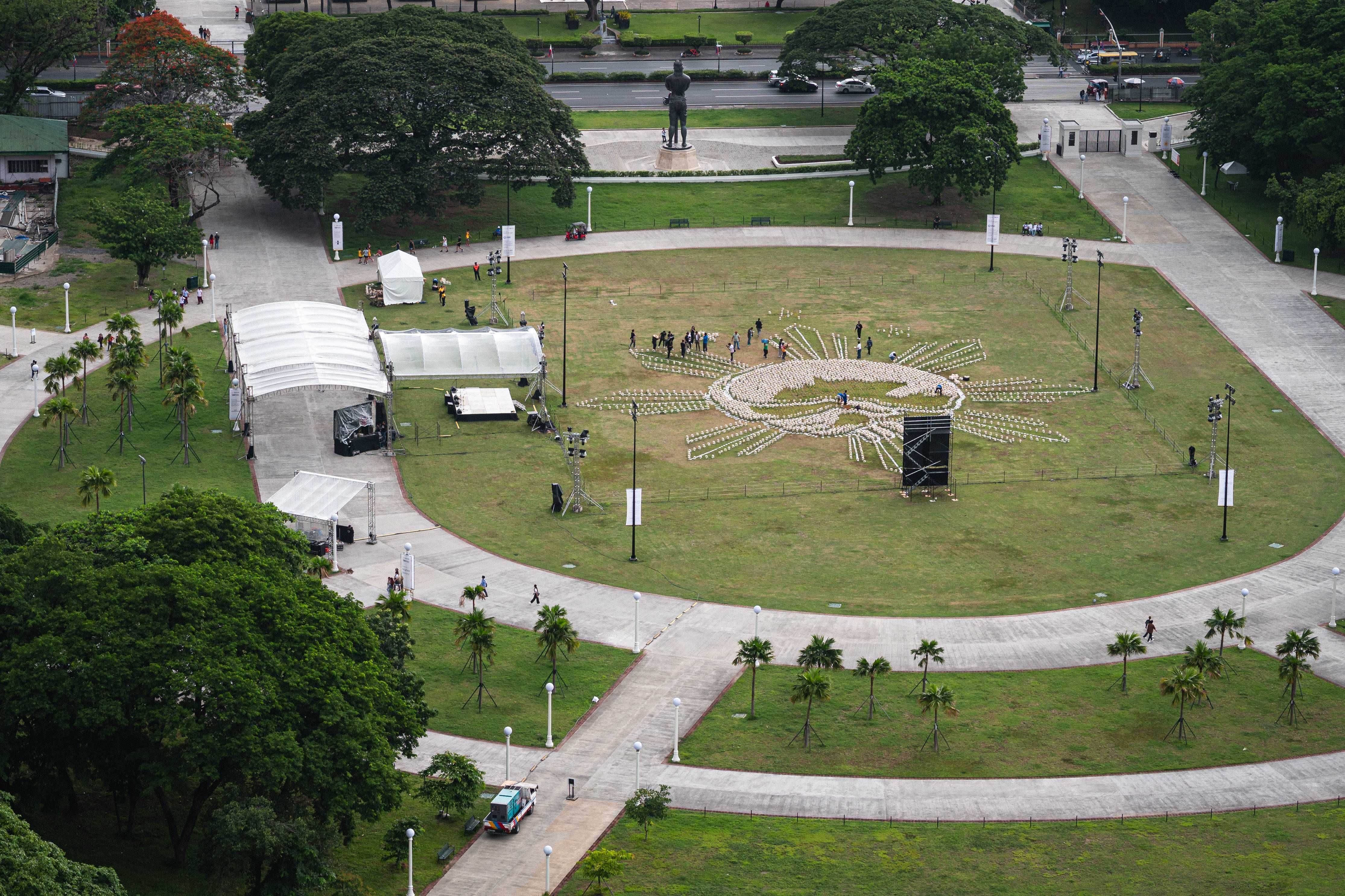 Photo by Derrick Lim Studio
Photo by Derrick Lim Studio
 Photo by Derrick Lim Studio
Photo by Derrick Lim StudioAs Liter of Light continues to grow and evolve, Diaz is optimistic about the future and the next generation.
As Liter of Light continues to grow and evolve, Diaz is optimistic about the future and the next generation.
“The greatest untapped source of change is the young people. The worst kind of thing you could do to them is try to keep on inspiring them, but not having any solution immediately—that gets them jaded in life. That's why I'm very happy when we do this kind of work [at Liter of Light] where you get people involved because you really have to work to be able to come out with the product and to really come up with something tangible,” he stated, sharing his understanding of what sustains young volunteers’ passionate support for an advocacy.
“The greatest untapped source of change is the young people. The worst kind of thing you could do to them is try to keep on inspiring them, but not having any solution immediately—that gets them jaded in life. That's why I'm very happy when we do this kind of work [at Liter of Light] where you get people involved because you really have to work to be able to come out with the product and to really come up with something tangible,” he stated, sharing his understanding of what sustains young volunteers’ passionate support for an advocacy.
ADVERTISEMENT
With the headline-making, record-breaking success of Circle of Light, Diaz hopes it signals the beginning of a new, empowering narrative about the Philippines.
With the headline-making, record-breaking success of Circle of Light, Diaz hopes it signals the beginning of a new, empowering narrative about the Philippines.
“We should start telling our own story because our climate change story, like how the global OFWs are fighting climate change by rebuilding it better with our own funds, will stop people from looking down at us every time that we're begging for funds for disasters. We are solving our own problems. We're coming up with our own emergency solar lighting solution, but it needs to have a global stage. And the only global stage I know is to create some of the largest climate artworks in the world with people that you don't think are going to make a difference, like farmers and the youth. I believe the story of the people is really very interesting. So with the Circle of Light, it sends me a whole-of-society approach. It’s a very inspiring thing. It was not just one corporation, but it was something like a corporation enabling everybody to come together, full circle, to make the largest climate movement or climate action in the world,” he concluded meaningfully.
“We should start telling our own story because our climate change story, like how the global OFWs are fighting climate change by rebuilding it better with our own funds, will stop people from looking down at us every time that we're begging for funds for disasters. We are solving our own problems. We're coming up with our own emergency solar lighting solution, but it needs to have a global stage. And the only global stage I know is to create some of the largest climate artworks in the world with people that you don't think are going to make a difference, like farmers and the youth. I believe the story of the people is really very interesting. So with the Circle of Light, it sends me a whole-of-society approach. It’s a very inspiring thing. It was not just one corporation, but it was something like a corporation enabling everybody to come together, full circle, to make the largest climate movement or climate action in the world,” he concluded meaningfully.
Lead photo by Derrick Lim Studio
Lead photo by Derrick Lim Studio
ADVERTISEMENT
ADVERTISEMENT


